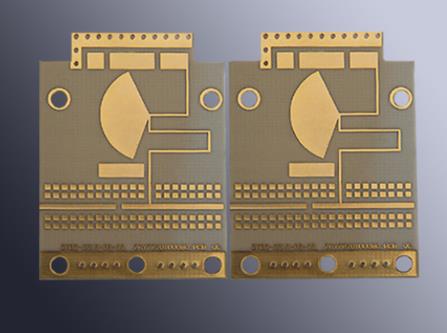PCB board shielding is the isolation of metals between two spatial regions to control the induction and radiation of electric fields, magnetic fields, and electromagnetic waves from one region to another. Specifically, it is to surround the interference source of components, circuits, assemblies, cables, or the entire system with a shielding body to prevent the interference electromagnetic field from spreading out; affects electromagnetic fields. Because the shielding body absorbs energy (eddy current loss), reflects energy (interface reflection of electromagnetic waves on the shielding body), and cancels energy (electrical Magnetic induction generates a reverse electromagnetic field on the shielding layer, which can offset part of the effect of interfering electromagnetic waves), so the shielding body has the function of reducing interference.

(1) When the frequency of the interference electromagnetic field is high, the eddy current generated in the metal material with low resistivity is used to form a counteracting effect on the external electromagnetic wave, so as to achieve the effect of shielding.
(2) When the frequency of interfering electromagnetic waves is low, materials with high magnetic permeability should be used, so that the magnetic lines of force are limited inside the shielding body to prevent diffusion into the shielding space.
(3) On some occasions, if it is required to have a good shielding effect on both high-frequency and low-frequency electromagnetic fields, different metal materials are often used to form a shielding multilayer body.
Many people do not understand the principle of electromagnetic shielding and think that as long as a box is made of metal, and then the box is grounded, it can play the role of electromagnetic shielding. The result is failure guided by this concept. Because electromagnetic shielding has nothing to do with whether the shield is grounded or not. There are only two factors that really affect the shielding effectiveness of the shield: one is that the entire surface of the shield must be conductive and continuous, and the other is that no conductors can penetrate the shield directly. There are many conductive discontinuities on the shield, the main one is the non-conductive gap formed at the junction of different parts of the shield. These non-conductive gaps create electromagnetic leakage, just as fluid can leak from a gap in a container. One way to address this leakage is to fill the gaps with conductive elastic material, eliminating the non-conductive spots. It's like filling the gaps in a fluid container with rubber. This elastic conductive filler material is the electromagnetic sealing gasket.
In many kinds of literature, the electromagnetic shield is likened to a liquid-tight container, and it seems that the leakage of electromagnetic waves can be prevented only when the gap is sealed with a conductive elastic material to the degree of water tightness. Actually, this is not exact. Because whether a gap or hole will leak electromagnetic waves depends on the size of the gap or hole relative to the wavelength of the electromagnetic wave. When the wavelength is much larger than the aperture size, no significant leakage occurs. Therefore, when the frequency of interference is high, the wavelength is short, and electromagnetic sealing gaskets are required. Specifically, when the frequency of interference exceeds 10MHz, it is necessary to consider the use of electromagnetic sealing gaskets. Any elastic and conductive material can be used as an electromagnetic sealing gasket. Electromagnetic sealing gaskets manufactured according to this principle are:
Conductive rubber: Fill the silicone rubber with metal particles accounting for 70-80% of the total weight, such as silver powder, copper powder, aluminum powder, silver-plated copper powder, silver-plated aluminum powder, silver-plated glass ball, etc. This material retains a part of the good elastic properties of silicone rubber, and at the same time has good electrical conductivity.
Metal braided mesh: Braided into a tubular strip with beryllium copper wire, Monel wire, or stainless steel wire, the shape is very similar to the shielding layer of a shielded cable. But its braiding method is different from that of the cable shield, which is braided with multiple wires, while this shielding gasket is woven from one wire. To make an image metaphor, it is like the sleeves of a sweater. In order to enhance the elasticity of the metal mesh, a rubber core is sometimes added to the mesh tube.
Finger reeds: Reeds made of beryllium copper have good elasticity and conductivity. Conductivity and elasticity.
Multiple conductive rubbers: It is composed of two layers of rubber, the inner layer is ordinary silicone rubber, and the outer layer is conductive rubber. This material overcomes the disadvantage of poor elasticity of traditional conductive rubber so that the elasticity of the rubber can be fully reflected. It works somewhat like a wire mesh strip with a rubber core. There are four factors to consider when choosing what type of electromagnetic sealing gasket to use: shielding effectiveness requirements, environmental sealing requirements, installation structure requirements, and cost requirements on the PCB board.